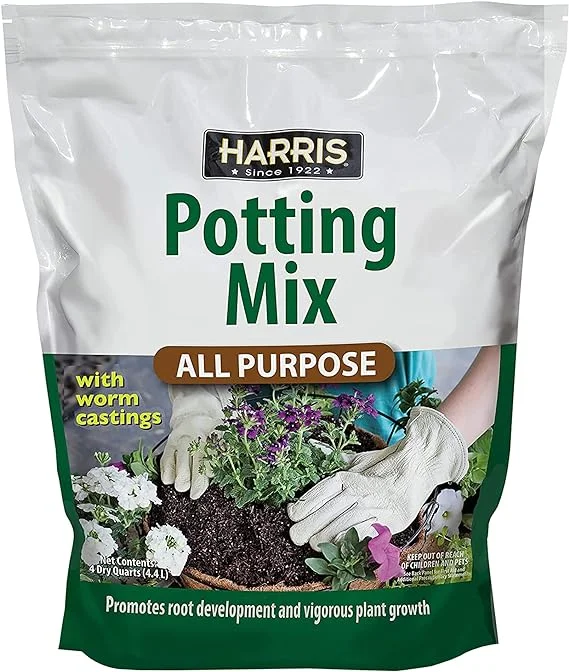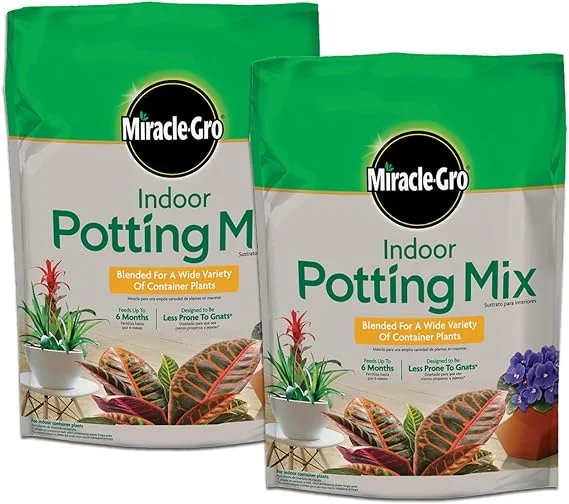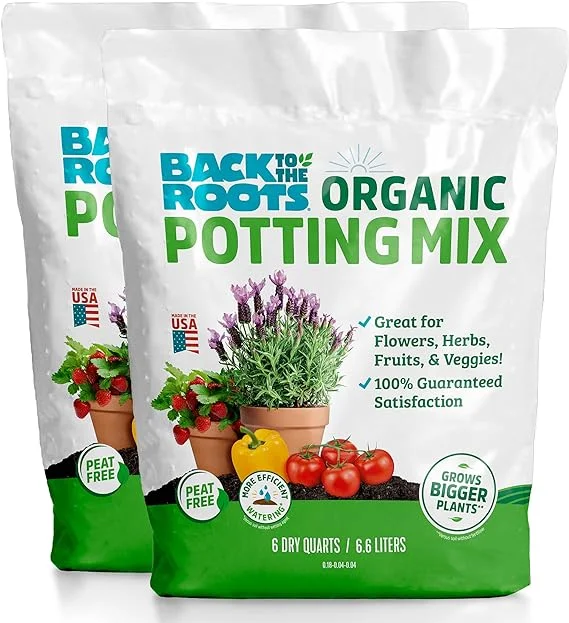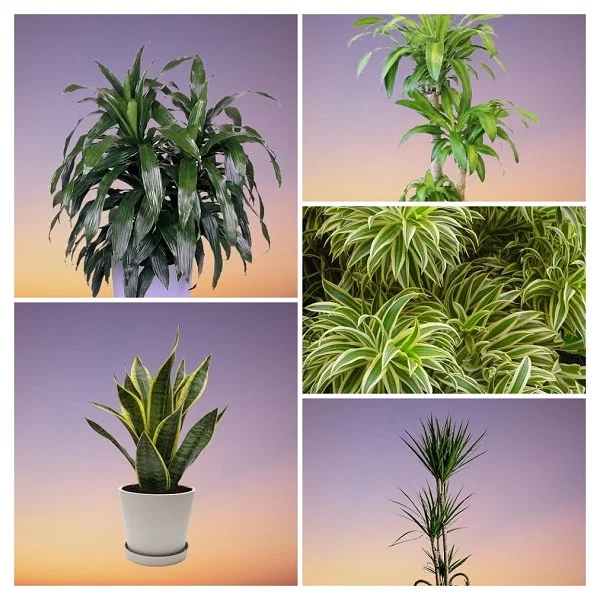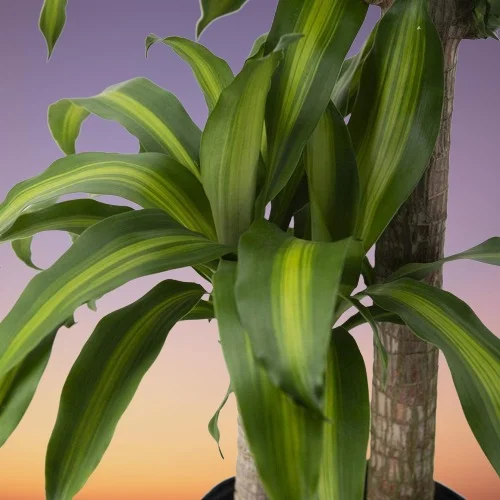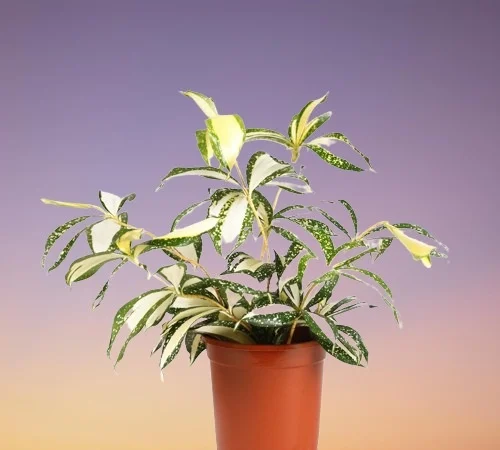14 Causes of Dracaena Yellowing Leaves and their Remedies
Some links in this post may be affiliate links
Dracaena yellowing leaves are due to too little light, overwatering, underwatering, soggy soil, underfeeding, cold drafts, low humidity, pests, being pot-bound among others.
Generally, Dracaena Plants flourish in bright indirect light (filtered light), average warmth, moderate humidity and consistently moist, rich, well-drained soil coupled with monthly feeding.
If the right growing conditions are not met, Dracaena leaves begin to yellow. We have herebelow outlined 14 reasons for yellowing leaves in Dracaena and how to fix them.

Why Dracaena leaves are turning yellow and their solutions
1. Soggy Soil
Poor quality soil does not drain well and easily becomes compacted or soggy which will negatively impact the growth of the plant. Soggy soil results in root-rot which is characterized by yellowing, browning followed by death of the plant.
Solutions
- Pot your Dracaena in rich, well-draining soil to prevent waterlogging. A mix of 2 parts potting soil, 1 part perlite, and 1 part orchid bark is ideal for these plants.
- Use a pot that has a drainage hole to prevent the soil from becoming soggy.
2. Too Little Light
Insufficient light implies that the plant cannot make enough food for energy and growth. In an attempt to save energy, the plant begins to die which starts with yellowing leaves. This way, the energy available is saved for the vital functions to keep the plant alive.
Solutions
- Move your Dracaena to a brighter spot where it will receive bright indirect light or use a grow light if you do not have enough natural lighting in your home.
- Regularly clean the leaves by damp-wiping with a soft cloth to ensure that it absorbs enough light for photosynthesis.
3. Pest Infestations
Pests attack the new growth from where they suck the plant sap. This causes the plant to become dehydrated which results in yellow leaves.
Solutions
- Regularly inspect the plant for these pests and take timely control measures.
- Isolated the affected plant and treat it with neem oil or insecticidal soap as recommended by the manufacturers.
- Damp-wipe the leaves regularly with a soft cloth to discourage the pests.
- Raise humidity to discourage pest infestations, by setting the pot on a wet pebble tray or by use of a humidifier.
Dracaena are prone to mealybugs, scale insects and spider mites.
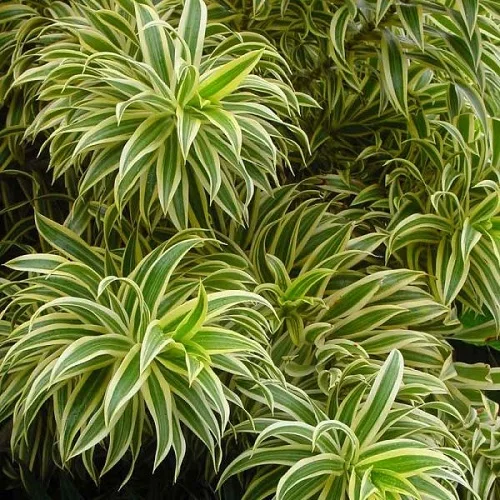
4. Underfeeding
Underfeeding means that the plant is not getting enough nutrients need for growth and energy. Inadequate nutrients in the actively growing tips causes nutrients to be withdrawn from the older lower leaves which begin yellowing.
Solutions
- Feed your Dracaena monthly with a balanced, water-soluble fertilizer in spring and summer. Ensure to follow the manufacturer's instructions on the label of the plant food.
5. Root-rot Disease
Root-rot disease is enhanced by soggy soil and is indicated by wilted, discolored and yellowing leaves which eventually drop and die. Soggy soil reduces oxygen concentration in the soil causing the roots to die. Once the roots die, they cannot take up water and nutrients to the leaves which start yellowing
Solutions
- Carefully slip the plant out of its pot and inspect the roots.
- Trim the brown-black, mushy roots and treat the healthy roots with a copper-based fungicidal solution as indicated on the label.
- Disinfect the pot with the fungicidal solution or use a fresh pot to repot the plant in fresh, well-draining soil.
- Do not water the plant immediately and keep it dry for 5-7 days before you can resume watering.
- Use a pot with a drainage hole and well-draining soil to prevent the soil from getting soggy.
- Cut down on watering in fall and winter as growth is slowed at this time; keep the soil slightly moist.
6. Overwatering
Overwatering results in excess water in the soil which reduces the oxygen concentration in the rootzone. Too much water causes the roots to die preventing water and nutrients from being taken up to the upper parts of the plant including the leaves.
Lack of water and nutrients in the leaves implies that they cannot make enough food needed for growth and energy causing them to turn yellow and die.
Solutions
- Water your Dracaena only when the top few inches of soil feel dry to the touch. Do not water on a schedule.
- Use a pot with a drainage hole and well-draining soil.

7. Underwatering
Underwatering implies that there is too little moisture in the soil, meaning, there is no water for the plant to take up to the leaves. Therefore, the plant cannot make enough food for growth and energy. Thus, it begins to die from the leaves which turn yellow, brown and die.
Solutions
- Water your Dracaena when the top soil dries out but do not allow the soil to dry out completely.
8. Cold drafts
Cold drafts from windy doors, drafy windows, AC units and others can lead to extremely cold temperatures resulting in reduced growth, yellowing leaves and death of the plant.
Solutions
- Keep your Dracaena away from the sources of cold drafts to maintain an average warmth of 16-280C. Usually, a room temperature that is comfortable for you is ideal for these plants.
9. Low Humidity
Too low humidity (dry air) causes dehydration resulting in brown leaf tips and edges. Eventually the leaves turn yellow, brown and drop.
Solutions
- To increase humidity for your Dracaena, set the pot on a wet pebble tray, use a humidifier or group the plants together. You may also grow the plant in a well-lit bathroom, kitchen or laundy area.
10. Overfeeding
Overfeeding will cause the roots to die due to fertilizer burn meaning they cannot take up water and nutrients to the leaves. The lack of nutrients and water needed for making food for growth and energy signals death for the plant which begins with yellowing of the leaves..
Solutions
- Take care not to overfeed your Dracaena. Follow the instructions on the label of the plant food to avoid overfeeding.
- Regularly flush out the salts from the soil by running a stream of water through the soil until it comes out through the drainage holes and repeat the process several times.
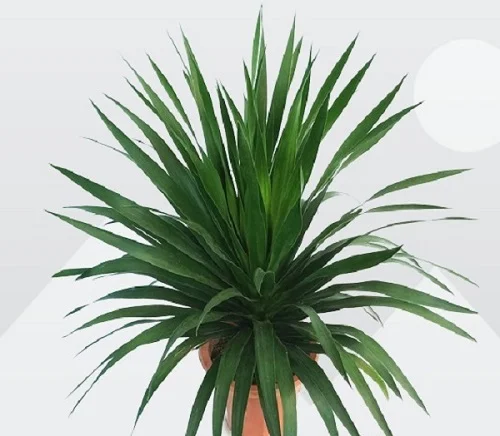
11. Salts buildup
Excess salts in the soil prevent the roots from taking up water due to the high concentration of salts. Since roots absorb water by osmosis, the high concentration of salts in the soil prevents water and nutrients from moving from the soil into the plant system.
Inadequate water and nutrients in the leaves results in lack of sufficient food needed for energy and growth. This causes the leaves to begin yellowing.
Solutions
- Flush out the salts from the soil by running a stream of water through the soil until it comes out through the drainage holes and repeat the process several times.
12. Being pot-bound
Being pot-bound means that the roots have filled the pot and there is very little soil to hold water when you water. Therefore, the plant cannot take up water and nutrients needed for making food for energy to the leaves. Lack of adequate food causes the leaves to turn yellow and drop.
Solutions
- Check the bottom of the pot for roots growing through the drainage hole.
- Repot the Dracaena into a pot one size larger than the current one to provide adequate room for growth. Take a look at these pots with drainage holes on Amazon.
13. Repotting Shock
Repotting may cause it some shock which may lead to some leaves wilting and turning yellow before the plant can adjust the new growing conditions.
Solutions
- To minimize repotting shock, water the Dracaena thoroughly one day before repotting as a well hydrated plant experiences less shock and is easier to divide.
- Do not make too many changes at once; after repotting, maintain the plant in the same location until it is well established before moving it to a new location.
14. Aging
Naturally, the older lower leaves will turn yellow and die to give room for growth of new leaves at the top of the crown of leaves.
Solutions
- This is a characteristic of Dracaena which gives them the false palm appearance.
- Cut the yellow leaves at the base to maintain the plant neat and tidy.
You liked it? Share on social media.
Related Content
Amazon Associates Disclosure
Homeplantsguide.com is a participant in the Amazon Services LLC Associates Program, an affiliate advertising program designed to provide a means for sites to earn advertising fees by advertising and linking to amazon.com.
